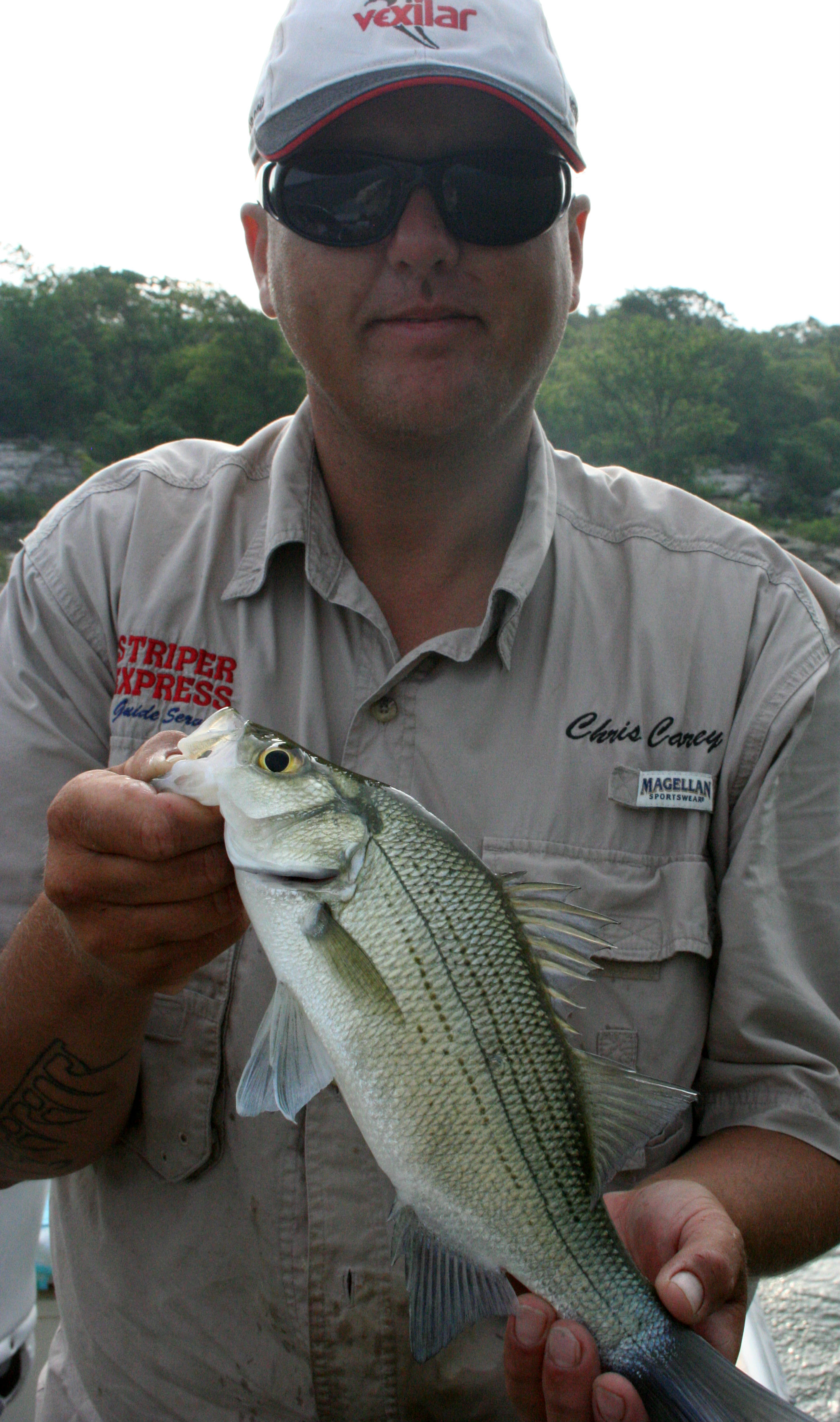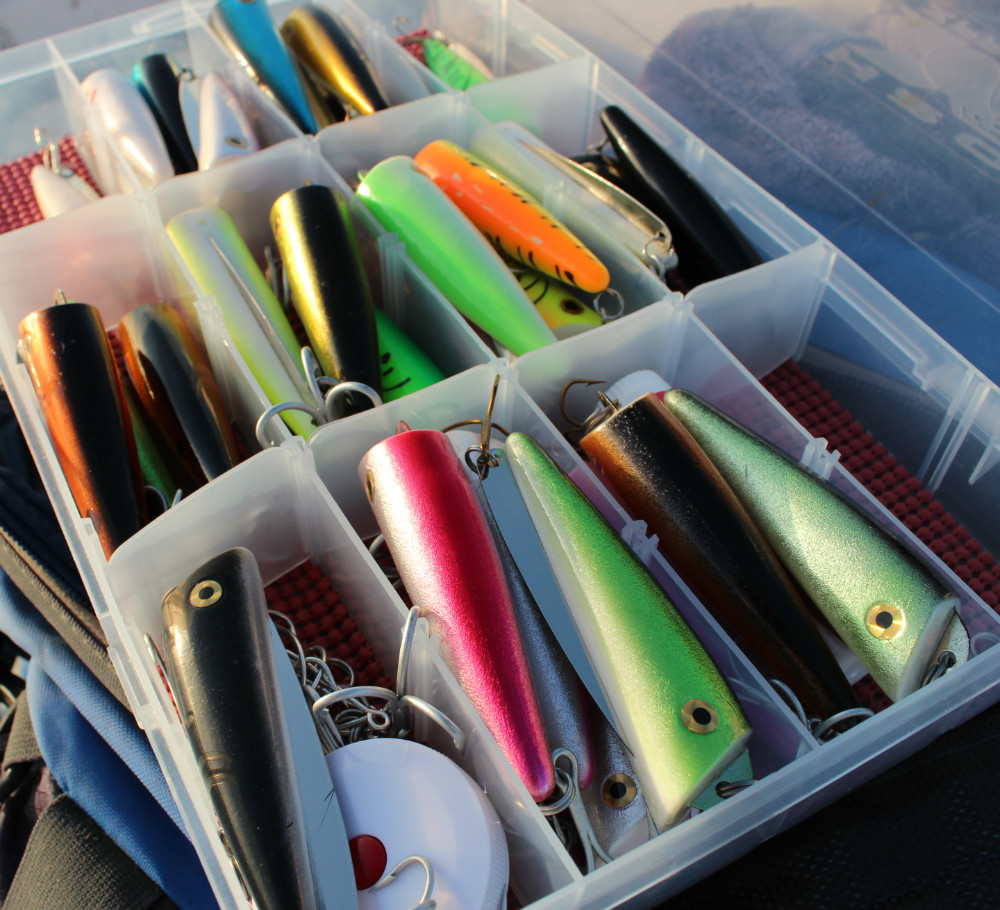Fishing during the middle of the day isn’t just tough — it’s downright dangerous.
It doesn’t take much to overheat and take all the fun right out of the pastime.
However, if you’re looking to find the magic hour, any success you have clearly will be both audible and visible.
Concentrating early and late this time of year near the surface by throwing topwater lures often will provide amazing angling action in almost any body of water for species ranging from largemouths and smallmouths to stripers, redfish and speckled trout.
Regardless of whether you’re angling on one of the biggest lakes or bays in the state or on a small family stock tank, the opportunities to see a big fish bust the surface while snatching your bait are better than average during the cooler parts of the day — which may mean it’s only 80 degrees instead of 100.
When most anglers think of topwater baits, they often have visions of time-tested thick plugs such as the Pop-R or Zara Spook spitting or chugging along, but lure companies today offer no shortage of imitations designed to attract fish to the surface, and with some variations, you can tailor an offering to changing water conditions in almost no time.

Working topwater lures into or near vegetation or other standing objects can be tricky, but many of these lures can be adapted to cut down on problematic hookups. With at least two or even three treble hooks on what typically are hefty lures, it certainly can be easy to snag anything from vegetation and clothing to a fish’s gills or eyes, which could contribute to mortality.
You don’t typically think about snags on open saltwater flats when you’re casting to redfish and trout, but if you’re using treble hooks you’ll almost always find an accumulation of grass when you bring back a topwater — even if you can’t see any floating near the surface.
To cut down on snags, consider replacing treble hooks with single hooks. Many pro anglers fish topwater plugs with a treble in front and a single hook in back, which makes a lot of sense, especially if they’re probing thick vegetation or cover, or even if they’re trying to cut down on light grass. If it’s really a problem, consider using a pair of single hooks or even just a single barb.
Other topwater lures that allow anglers to alter their fishing presentations are buzz baits and spinner baits, which most often come with interchangeable blades that can be switched out in a cinch to match conditions. Saltwater spinner baits have gained in popularity in a number of notable skinny water hot spots and they’re designed to be rustproof, which certainly is a useful concept.
Another innovation that has changed the way many anglers fish topwaters deals with buzz baits, specifically the addition of a “clacker” that increases the noise and vibration as the lure cuts through the water.
Boat docks and pilings are some of the best places to drag a topwater bait even during the hottest parts of the day, and since you don’t necessarily have to hit fish on the head for them to strike, you don’t usually have to be a top-flight flipper or pitcher. Other freshwater hot spots to think about are areas such as riprap, rocky points and standing timber, where fish tend to congregate before moving deeper as temperatures rise.
One approach to frog fishing or chunking a weedless lure is to bounce it off objects in the water. The theory is that the added sound mimics a critter trying to get out of an area in a hurry and the fish will home in and strike simply out of reaction.
Another theory on topwater fishing is that it’s best during cloudy, overcast days or in low-light conditions, which negate a fish’s ability to get a clear look at a lure that’s making a lot of noise but may not fit the preferred shape of a favorite or usual meal.
While that’s a keen observation in many circumstances, it’s not rooted in fact. I’ve observed redfish sun-tanning — with their backs out of the water — strike a variety of lures on crystal clear flats without a hint of cover in the sky. In those situations it’s obvious that if the fish are even somewhat hungry and you don’t spook them, you’ve got a number of options to get them to strike.
Topwater fishing is amazing when the fish are willing to rise, and even a small bass or redfish can produce a booming strike. While their aim usually is true, fish often miss their mark. The faster you hum a lure across the surface, the less likely a fish is to suck it down, so it’s good to slow down and vary your retrieves. Some fish will go a long way to track down a fast-moving lure while others won’t even give a slow-moving bait a second look.
Many times you’ll actually see a fish hit before you feel its weight, so you often must wait before ripping in the opposite direction. That especially is true in shallow water situations when you actually see a fish target, chase and slam your offering.
In the case a fish blows up on a lure but doesn’t take it, pitch it right back where the boil occurred, unless you can still see your target. Many bass pros often keep multiple rods at the ready when topwater fishing equipped with some kind of flipping lure such as a Texas-rigged lizard or crawdad pattern for follow-up shots.
Though most anglers use a bait-casting setup for topwater fishing, it’s as easy to work many baits with a spinning outfit. For many topwater situations, the preferred rod is a heavy, fast-action stick equipped with a high-speed reel, which is good if you’re attempting to quickly horse a fish out of thick cover. However, you can fish most topwater baits with a medium, moderate-action rod and do just as well.
I’ve seen fish of all sizes thump lures of all sizes. Among the most exciting was a day lousy with white bass on Lake Texoma, when schools of 2-pound fish were exploding out of the water to hit 10-inch plugs rigged up more for stripers. Days like that are impossible to forget.
With a little effort, even the hottest days will turn out to be pretty cool.




















“Fishing during the middle of the day isn’t just tough — it’s downright dangerous.” – this is so true!